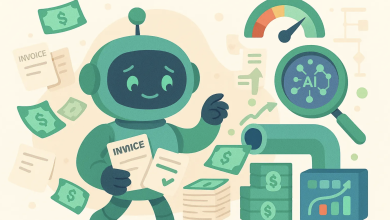
Financial inclusion, including stress-free access to loan products, used to be a dream for many consumers. In 2025, it’s part of daily life, thanks to mobile platforms.
Online Fintech companies are finally opening doors that traditional banks kept firmly shut. People once sidelined by outdated systems are now tapping tools that offer faster access, clearer choices, and better control.
Whether paying bills, applying for credit, or setting financial goals, fintech is changing how everyday people handle money. And this shift isn’t just about ease – it’s about equity. These platforms aren’t just keeping up. They’re leading, especially where old institutions lag behind.
Mobile Banking Democratizes Access
Your phone is no longer just a phone. It’s your bank branch, your budget coach, and your financial assistant – all available with a single tap.
Mobile banking has outgrown balance enquiries. Today’s apps do everything from auto-saving to expense breakdowns. They let users transfer money instantly, split bills without drama, and track spending in real time.
For consumers juggling gigs or living far from a physical branch, these tools are lifelines. Sign-up is quick. ID checks are simplified. No lines, no paperwork, no “come back later.” And the best part? These features used to be reserved for elite banking clients. Now, anyone with a smartphone can play.
Embedded Finance Brings Tools to Where People Already Are
Why search for financial help when it can meet you where you’re already scrolling?
Fintech is embedding services inside platforms we use daily, shopping apps, delivery services, and even freelancer portals. You can buy now, pay later. Get paid early. Take a micro-loan before dinner’s even delivered.
This approach is a win for busy people and those who find traditional finance overwhelming. Gig workers, for example, no longer wait for end-of-week pay. Now they can access earnings or apply for advances inside their work apps. No toggling. No delays. Just tools that blend into everyday life.
Expanded Credit Access for People With Imperfect Records
Traditional credit models often shut out people who have fallen behind on payments or faced financial setbacks. Fintech companies are changing that by using alternative data like rent payments and mobile behavior to evaluate risk more fairly.
New Data Sources That Support Approvals
Instead of relying solely on a FICO score, some fintech platforms assess financial health using rental records, on-time utility payments, and even consistent mobile phone top-ups. These indicators reflect real-life financial behavior, giving borrowers with thin or damaged credit files the chance for a fairer evaluation.
Loan Products Tailored for Imperfect Credit
Fintech lenders now offer short-term, installment, and line-of-credit options specifically designed for people who need second-chance financing. These products often come with lower barriers to entry, clear repayment terms, and fast approvals, sometimes within hours.
For many, these tools have answered a question that once felt like a riddle with no solution: how to get a loan when no one will approve you. Fintech companies provide the answer, combined with the speed and flexibility that provide a new path forward for consumers who are rebuilding.
Streamlined Borrowing Through Digital Verification
Another advantage is the reduction in manual paperwork. Document uploads, bank linking, and identity checks are now handled through secure APIs and biometric systems. The user experience has improved dramatically. Borrowers no longer wait days for callbacks or sift through endless forms. Instead, they go from inquiry to approval in minutes.
Automation has simplified loan processing for everyone, from students with limited histories to single parents managing multiple accounts.
Fintech’s ability to match applicants with tailored credit products, based on real-time data and spending behavior, also cuts down on unnecessary debt. This tailored approach means fewer surprises and more realistic repayment plans. It also gives consumers a clear view of what they qualify for before they accept any terms.
Better Tools for Budgeting and Expense Management
For finance to feel accessible, it has to feel understandable. Fintech apps are doing more than just offering services. They are educating users without lecturing them. Interactive tools like real-time spending trackers, automatic savings nudges, and income summaries help users grasp where their money goes. These tools create everyday accountability, even without a formal budget.
Some platforms now gamify budgeting, rewarding milestones, and encouraging consistent behavior. Others integrate directly with employer systems to help users set aside funds automatically.
This creates a natural rhythm for saving, even for those on unpredictable incomes. It also gives consumers the chance to make better choices before small overspending snowballs into financial strain.
Key tools often include:
- Real-time spending breakdowns
- Automated savings rules
- Income and expense categorization
- Gamified goal tracking
- End-of-month summary reports
These features work quietly in the background but create a noticeable shift in how people manage their money day to day and month by month.
Financial Inclusion Without Geographic Limits
Access isn’t just about approval, it’ss also about reach. Fintech has reduced the need for physical infrastructure. Consumers in rural or underserved areas now manage accounts, apply for credit, and transfer funds all from their phones. This is especially impactful in communities where banks have closed or never existed. Fintech’s cloud-based infrastructure allows companies to serve users in real time, regardless of where they live.
Many fintech companies also support multilingual interfaces and culturally relevant design. This helps build trust with users who may have avoided financial services in the past due to a lack of familiarity or past mistreatment. By meeting people where they are, both digitally and culturally, fintech is creating a new kind of user experience, one that invites participation rather than gatekeeping it.
The Shift Toward Fairer Consumer Finance
Fintech isn’t just making things faster. It’s making them fairer. By replacing gatekeeping with guidance, it’s helping people step into financial systems that once shut them out.
These platforms understand real life. They build around it. From budget tools to credit options to in-app lending, fintech has redefined access in 2025.
The result is financial services that don’t just include more people, they actually serve them. In a world full of complexity, that’s real progress.






